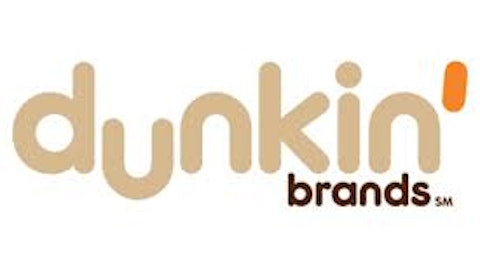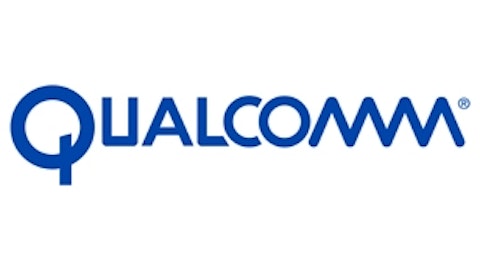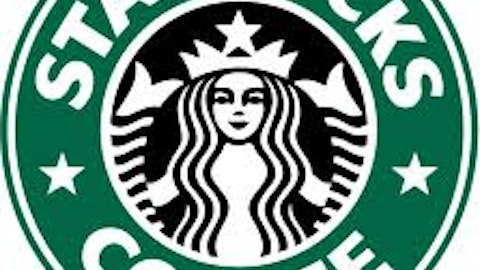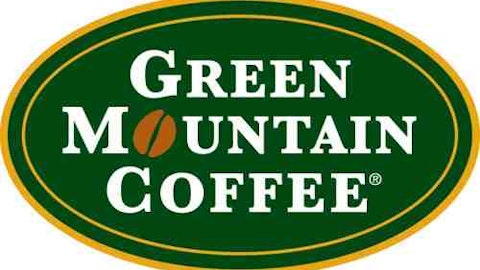It is with good reason that coffee has a second name as black gold. This simple bean powers the most fundamental capital: human capital. Let’s review a few of the most prominent publicly traded players in the coffee competition.


SBUX Total Return Price data by YCharts
The Opportunity in Tim Hortons Inc. (NYSE:THI)
Tim Hortons is a Canadian coffee and quick service restaurant chain with room to expand. Canada is nowhere near the size of the U.S., with a small population around 35 million. As of Jan. 1 of last year, the company had 3,295 restaurants in Canada, and only 714 in the U.S.
In Q3 2012, Canada generated $473.6 million [CAD] in operating income, while its U.S. operations generated $11.8 million [CAD]. In the first three quarters of 2012, the company opened 44 new stores in the U.S. It posted U.S. same-store sales growth of 2.3% in Q3 — 40 basis points higher than Canadian same-store sales growth in the same time period. In Canada, the company is already a dominant firm, and over the coming decade, it will be forced to venture deeper into the U.S. if it wants to achieve significant growth.
The firm has good financials, with a total debt-to-equity ratio of 0.4, a profit margin of 13.1%, and a gross margin of 28.4%. Its ROI of 24.8% is also respectable. The company trades at a P/E ratio of just 19.4, which is cheap considering the positive long-term growth profile.
Tim Hortons has already developed a nationally recognized brand name in Canada, and with determination, it will be able to do the same in the U.S. For long-term investors, Tim Hortons is a good company to watch, as it expands its operations and continues to operate within its core competencies of quality hot food and coffee.
Starbucks Corporation (NASDAQ:SBUX)‘ Long Term Outlook
Success can cause many problems and headaches. Starbucks is not in this territory just yet, but over the coming decade, it will have to ask itself a number of hard questions. In 2013, the Americas and Europe, Africa, and the Middle East [EMEA] net store number will grow by 5% while China and Asia Pacific has a goal of 18% unit growth rate.
Asia and China specifically are currently the world’s growth stories. Wages continue to grow, and soon China will soon face competition from other manufacturing centers which are closer to some of the world’s biggest markets. Coupled with negative demographic headwinds, China’s future growth is not as rosy as before.
Starbucks sees these changes, and its large footprint in developed markets is causing it to look beyond coffee. It recently bought Teavanna to gain a footing in the tea market. If Starbucks continues to adopt a “share of stomach” strategy in the name of growth, then it risks losing their original differentiator: a European-style coffee experience. Wall Street loves growth, and Starbucks may have to sacrifice its ethos in order to serve the financial overlords.
Right now, the company has a clean balance sheet with a total debt to equity ratio of 0.11. Its ROI of 25.1% is strong. The firm’s five-year EPS growth of 28.56% and five-year revenue growth 6.06% show increasing margins. Such strong growth is amazing for a company of Starbucks’ size, and the company is priced accordingly, with a P/E ratio of 30.6. The firm is attractive, but its desire for high growth should cause long-term investors to hesitate before investing.
The Dunkin Donuts Dilemma
Dunkin Brands Group Inc (NASDAQ:DNKN) recently IPOd after being saddled with larger amounts of debt by its previous private equity owners. This coffee company is different from Starbucks and Tim Hortons, because it operates a very asset-light model where almost all of its stores are franchised.
Dunkin’ Donuts is the company’s main brand, though Baskin Robins’ U.S. operations made up 7% of 2012 revenue. Dunkin’s total debt-to-equity ratio of 5.84 is not a pretty number. Even with this debt load, the company uses 65% of its earnings to pay a 1.6% dividend.
The firm is heavily focused in the U.S., with 82% of sales coming from that country. America’s stubbornly high unemployment rate and economic slowdown aren’t going away any time soon, and Dunkin expects 2% to 4% comparable same-store sales growth in the U.S. for 2013. The company is planning for growth with a slow expansion out of the Northeast. Regardless, its $1.8 billion in long-term debt is a major risk that should make any investor very cautious.
Conclusion
Of the three companies discussed above, Tim Hortons provides the most unique growth opportunity. Its Canadian operations are a profitable base for the company. These earnings can be plowed into Tim Hortons’ U.S. operations to drive growth. Perhaps most importantly, Tim Hortons is much smaller than Starbucks — and it doesn’t have to abandon its coffee culture to find growth.
The article The Hidden Opportunity In Tim Hortons originally appeared on Fool.com and is written by Joshua Bondy.
Copyright © 1995 – 2013 The Motley Fool, LLC. All rights reserved. The Motley Fool has a disclosure policy.




